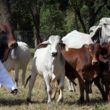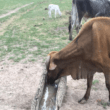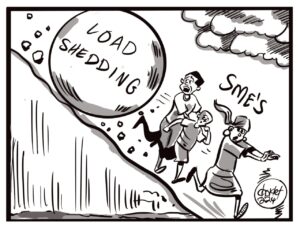Early Warning System Network (FEWS), a USAID subsidiary, says the humanitarian crisis in Zambia and surrounding sub-Saharan countries will worsen because of severe droughts, coupled with below average rainfall, which will result in below average food production.
And FEWS says donors and humanitarian partners should prepare for a typically high food assistance needs throughout 2020 and beyond.
In a statement, the USAID agency stated that severe droughts, coupled with widespread rainfall deficits, would drive significant assistance needs, especially in Zambia and South Africa.
“Severe drought and current below-average forecast will drive significant assistance needs in 2020. Across southern Africa, the October, 2019, to March, 2020, season started poorly with widespread rainfall deficits. International forecasting models anticipate a high probability of below-average rainfall through March, including in surplus-producing Zambia and South Africa. This follows the poor 2018/19 season during which widespread drought resulted in poor agricultural production and deteriorated livestock conditions,” read a statement.
“The population is expected to face crisis or worse outcomes across southern Africa though the March, 2020, peak of the lean season will be well above average, and needs are expected to only rise further in late 2020 at the start of the next lean season.”
And FEWS added that donors and humanitarian partners should prepare for high food assistance needs throughout next year and beyond.
The Agency said the regional supply of maize for the marketing season was also expected to drop to a record low.
Zambia’s maize output dropped to 2,000,489 metric tonnes this year compared to 2,394,907 tonnes harvested last year, an historic 10-year low.
“Donors and humanitarian partners should prepare for a typically high food assistance needs throughout 2020. Large-scale crop losses occurred at the end of the 2018/19. Regional maize grain supply for the current marketing year is slightly below the five-year average, reaching their lowest levels since the 2016/17 marketing year. As a result, maize prices are significantly above average across the region. Many poor agropastoral households depleted their food stocks atypically early, resulting in earlier than usual reliance on market purchases,” FEWS stated.
“The start of the 2019/20 rainy season has been erratic, with early season deficits, and international forecasts are all indicating January to March, 2020, rainfall is expected to be below average. Recent heavy rainfall over areas of South Africa, Botswana, Namibia, and Angola lessened, but did not eliminate early season deficits. Regional pasture and vegetative conditions have improved gradually with recent rains, though livestock body conditions are well below normal. Planting is ongoing, although at below average rates due to erratic onset of rains. The combination of a typically high food prices coupled with limited incomes (from low livestock prices and agricultural labor opportunities) have reduced household be purchasing power.”
The Agency further revealed that maize prices across the region were expected to remain high and exceed this year’s average prices.
“Rainfall during the December to March period is critical for crop development. Below-average production is anticipated in Angola, Botswana, Lesotho, Namibia, Zambia, and Zimbabwe, and average to below-average production is likely in South Africa and Mozambique. Since Zambia and South Africa produce more than 70 per cent of regional maize grain, regional maize grain supply for the 2020/21 marketing year is expected to be below 2019/20 and the five-year average. As a result, maize grain prices across the region in 2020 are anticipated to remain high and exceeding 2019 prices.”
“Lower than average access to labour opportunities are anticipated throughout 2020. Livestock body conditions are anticipated to improve in the short-term as pasture land slowly regenerates, although grazing conditions are expected to deteriorate atypically early. Higher than average livestock deaths are again anticipated in the latter half of 2020 until the start of the 2020/21 rainy season. These trends, coupled with above-average staple food prices, will limit poor households’ ability to purchase sufficient food to meet their needs across much of the region. The exceptions include northern Madagascar and northern and central Mozambique and Malawi where average to above average rainfall is anticipated to support normal.”












